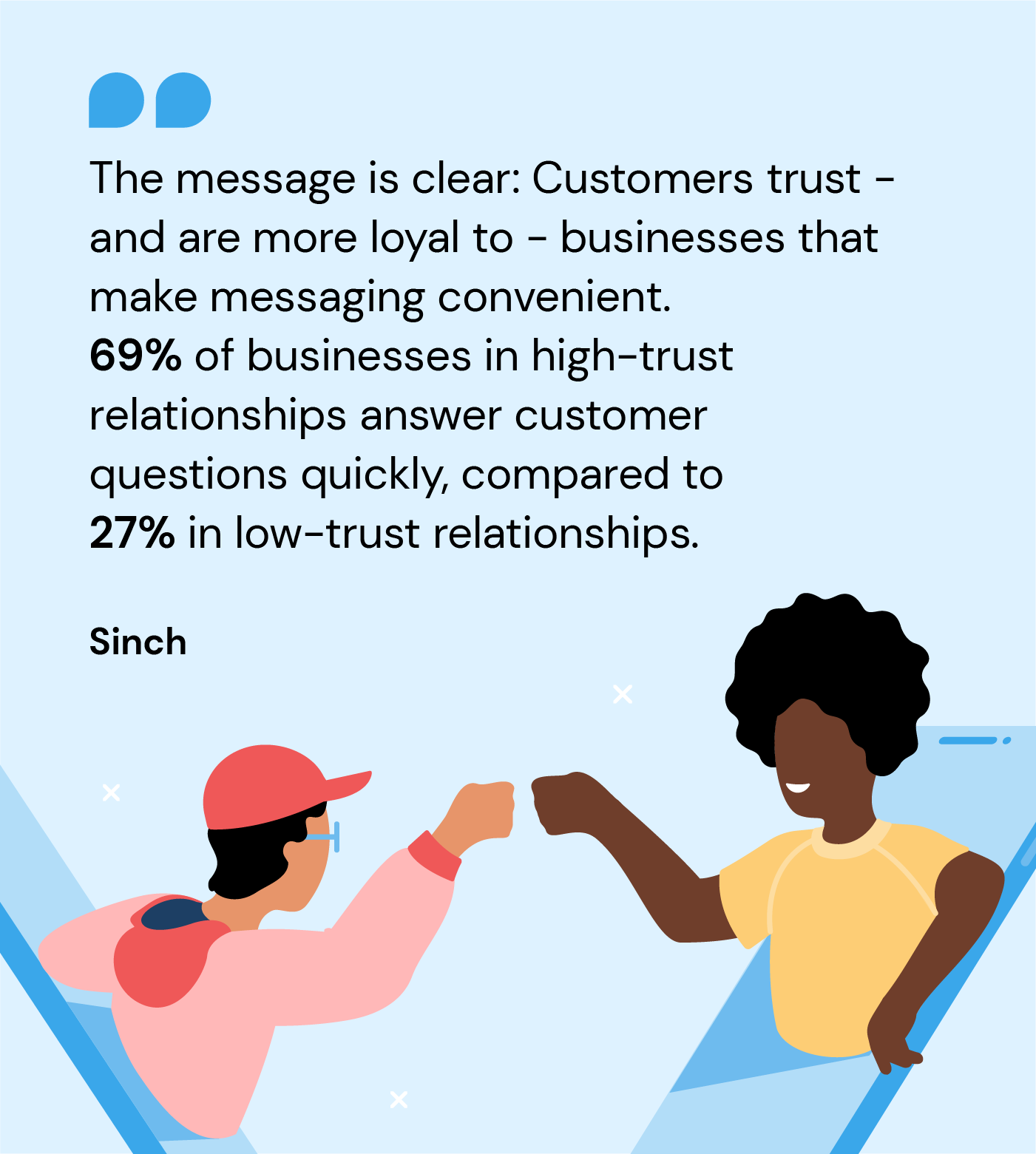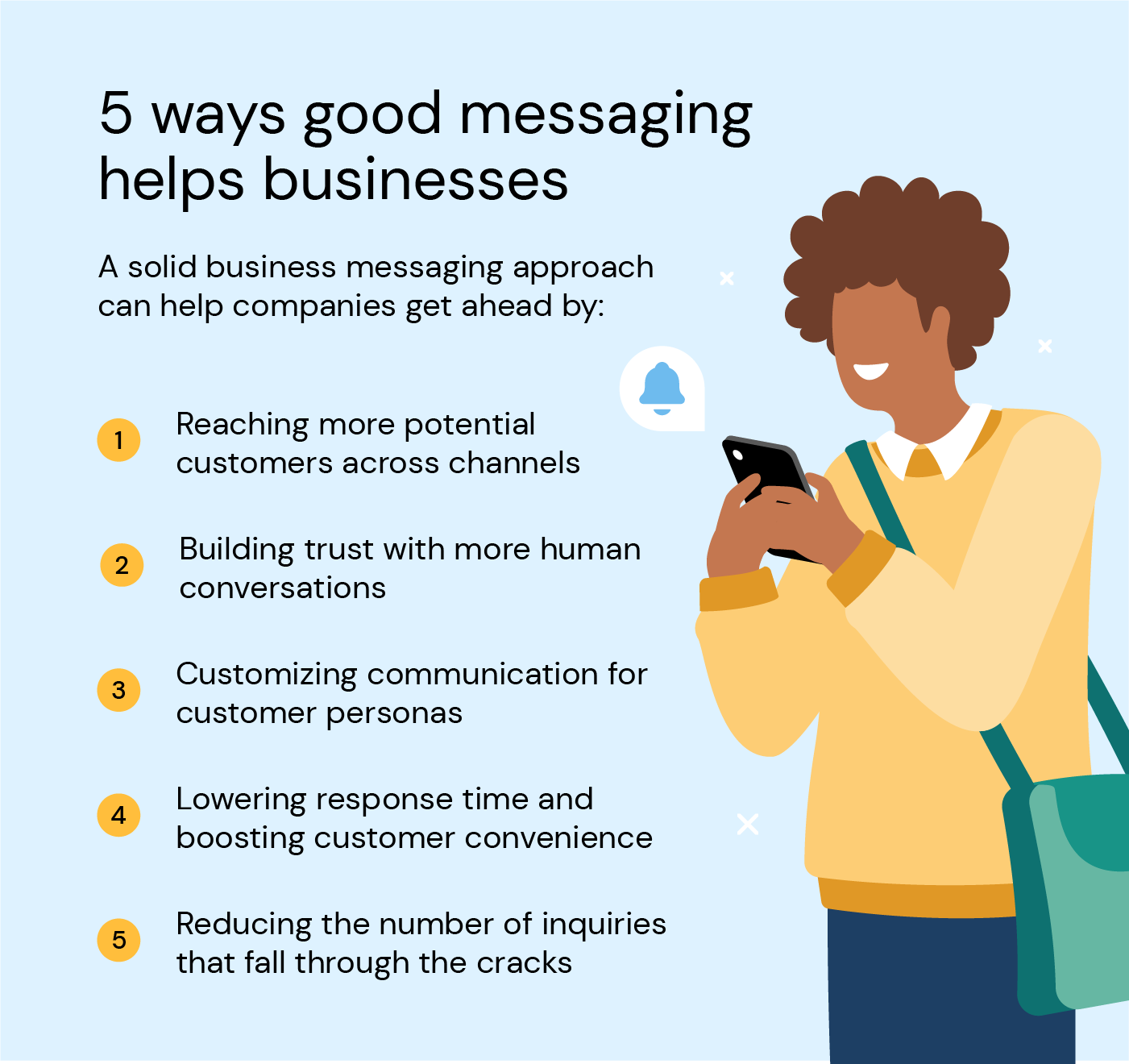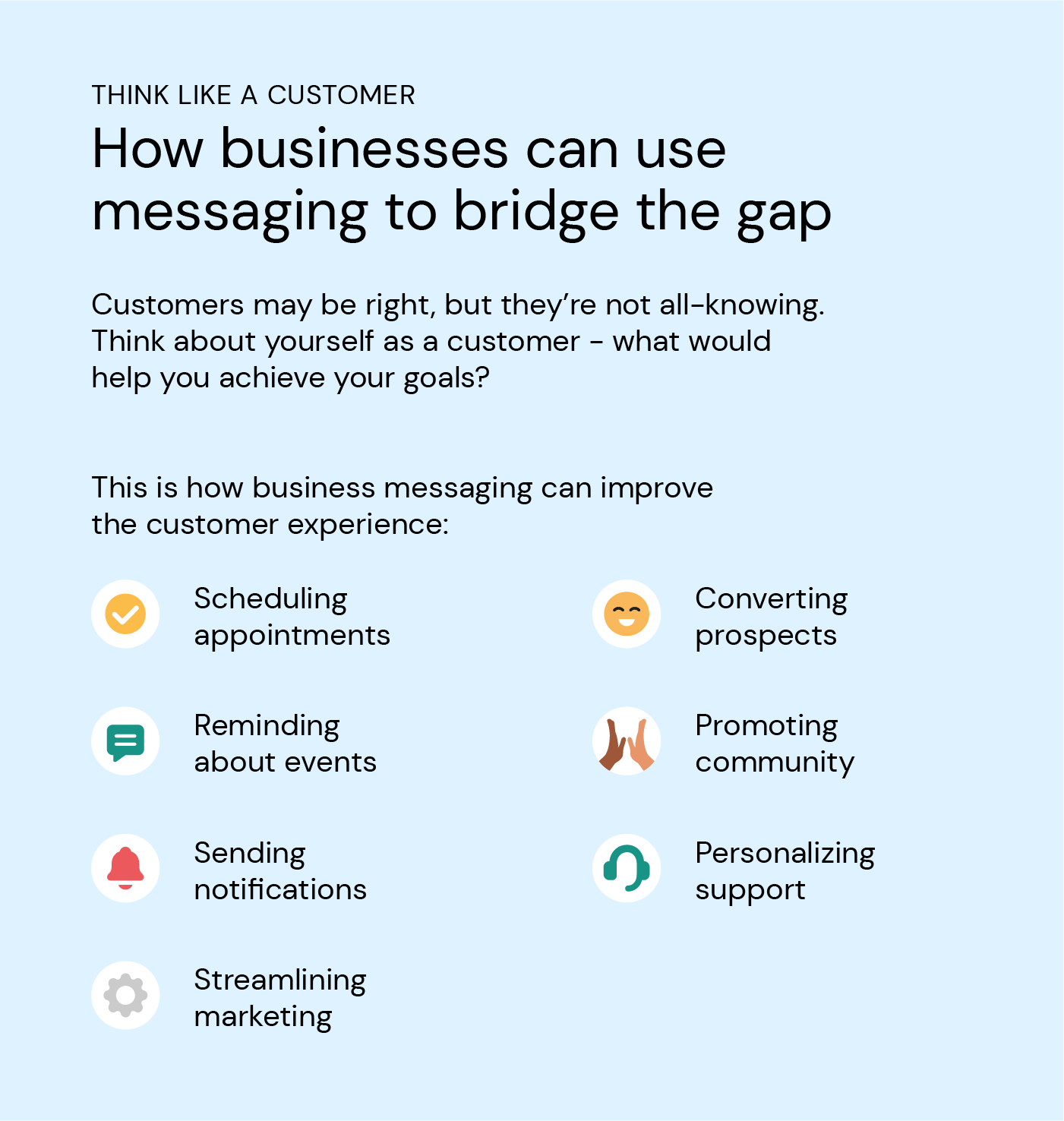Insights
What is business messaging? Best practices, pitfalls, and examples

Insights

It used to be true that business messaging wasn’t really an option, and companies were often hard to reach. Now, customers expect immediate and interactive communication – and businesses are expected to catch up or get left behind.
A solid business messaging strategy puts enterprises right where they need to be to best engage with their core customers.
If your first thought reading this is, “Wow, I need to upgrade my company’s messaging strategy,” then you’re in luck. Doing so can offer a host of benefits that bolster the relatively low cost of engaging messaging APIs. Keep reading for more on these benefits, plus a business messaging definition and usage examples.

Business messaging is how businesses engage and respond to their customers across channels. Modern business messaging means being everywhere your customer is.
Companies need to be responsive, relevant, and helpful to meet the needs of consumers today. They should look to be “always on”, bumping up the convenience factor for customers who may have a request outside of normal business hours – whatever “normal business hours” means nowadays in a convenience-first world.
When business messaging is done right, it smoothes the customer experience and encourages them to return. In fact, 89% of consumers say they’re likely to return and make another purchase after a positive customer experience.

It isn’t just customers driving the discussion around business messaging practices – top industry leaders in customer support are in on the conversation, too. Almost 7 in 10 of those leaders recognize personalization in messaging-based customer support as the top driver of strong customer relationships.
But what specific benefits can companies expect by upgrading messaging strategies?
For starters, businesses can appease more customers with effective communication. According to a Meta-commissioned poll, 75% of adults would like business communications to mirror those with friends and family. That means a personalized messaging strategy can build trust and improve the customer’s experience.
We’ve established that most businesses in high-trust relationships answer customer inquiries quickly, and more than half of users believe that businesses should be available 24/7.
Effective messaging also means that fewer customer requests and inquiries fall through the cracks. Businesses should prepare to hit the ground running on messaging best practices to know what their customers – and the law – expect from them.
The secret to getting the most out of a strong business messaging strategy is to put the customer’s needs first. Luckily, this is the secret to just about every other communication blueprint in business.
Here are the five best practices to boost the value for both parties in customer conversations.
First and foremost, compliance is key to any business messaging strategy.
Short code campaigns depend on organizations like the Cellular Telephone Industries Association (CTIA) to advocate for legislation that regulates mobile messaging.
10DLC carriers have their own set of regulations to comply with so brand messages aren’t filtered as spam, and brands need to register with those carriers to avoid them.
Google even has its own unique guidelines for business chat messages.
If you can’t already tell, regulations differ regionally and by product, and keeping up with local laws about customer engagement can be a huge logistical challenge. Each carrier and service provider has specific rules. Even messaging channels weigh in on guidelines, with opt-in and opt-out rules to protect their users’ privacy.
Partnering with an experienced business messaging partner like Sinch can help simplify this compliance headache and get businesses started with a laser-focused messaging strategy.
Don’t spam your users with sales texts! Prioritizing customer service first and sales second can help strengthen users’ trust in a brand and increase the chance that they become repeat customers – or even brand ambassadors.
Customers are already weary of suspicious messages that attempt to extract their personal information. Companies must be smart to avoid falling into the never-opened-message category.
Nearly two-thirds of consumers can’t get their questions answered or their needs addressed with standard customer service. This leaves a giant gap between companies and users who don’t feel like they’re the priority when it comes to business messaging.
Businesses should look beyond simply avoiding spam messages and should aim to be as personal as possible.
Customers who want businesses to talk with them like they do with their friends won’t settle for impersonal and hollow messaging. They expect businesses to know who exactly they’re talking to.
Businesses can use omnichannel messaging to expand their customer knowledge and cater more specifically to each customer’s needs. This also helps reduce annoying wait times that cause some customers to give up and seek new business elsewhere.
Speaking of specificity and personalization, it doesn’t get less personalized than a business sending a customer a 3 a.m. text on a weeknight.
Part of understanding a customer is knowing where they live – and that includes their time zone, too. A well-timed message can increase customer engagement while one that’s poorly timed can do the opposite, or even cause customers to try another company entirely.2
Some channels even mitigate this risk themselves by setting rules on when you can send business messages to users, like KakaoTalk.
Lastly, knowing which channels your users prefer is key to getting through to them. Some may prefer email over messaging, while others expect a chatbot or voice call to walk them through an inquiry.
Businesses need to know what markets and demographics their target audience is part of – and there may be several. Consider your customers’ needs and channels:
There are several channels that might appeal to a given customer, but some of the most popular ones are:

There are plenty of ways that business messaging can level up customer outreach and engagement.
Use business messaging to engage with customers about scheduling appointments and make sure they follow through with those plans by gently nudging them with a personalized note. Integrate with the customer’s calendar or email to remind them about events that they’ve RSVP’d to or showed interest in.
Did you receive a new order from a customer or introduce an update that they’d be curious about? Send them a personalized notification about the item they ordered or regarding the update.
Customers now expect synchronized communication from their most trusted brands. It turns out that streamlining across multiple channels is easy, with Sinch helping you send the right message to the right person at the right time via the right channels.
Speaking of sending messages via the right channels, effective business messaging helps convert customers when the time is right. When brands use tools like conversational AI, customers respond well. In fact, these tools have been shown to increase conversions by 30%–50% in retail and e-commerce businesses.
One prime example of customer engagement that indicates high interest in your brand is social media interaction, like commenting on a brand’s posts. Meet those customers where they are and keep the conversation going via their favorite social channel.
Continue to look for insights on customer behavior. What are they most and least satisfied with regarding your products? Have they left any reviews detailing specific problems? Do they follow your company’s social media accounts? Don’t overlook these details as you look to offer support – these personalizations can drive trust and loyalty over time.
We no longer live in a world where businesses must wait for customers to find them – the tables have turned.
With Sinch, you can go where your customers are and market to them strategically based on insights you gather from messaging channels.
To learn about different channels where businesses can reach their customer base, check out Sinch’s Channel Guide for more information.